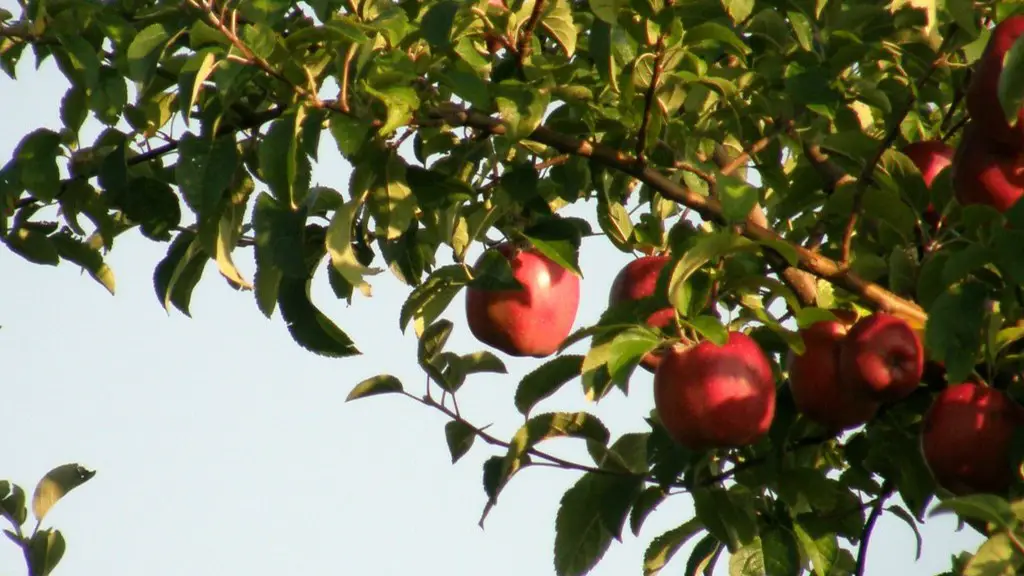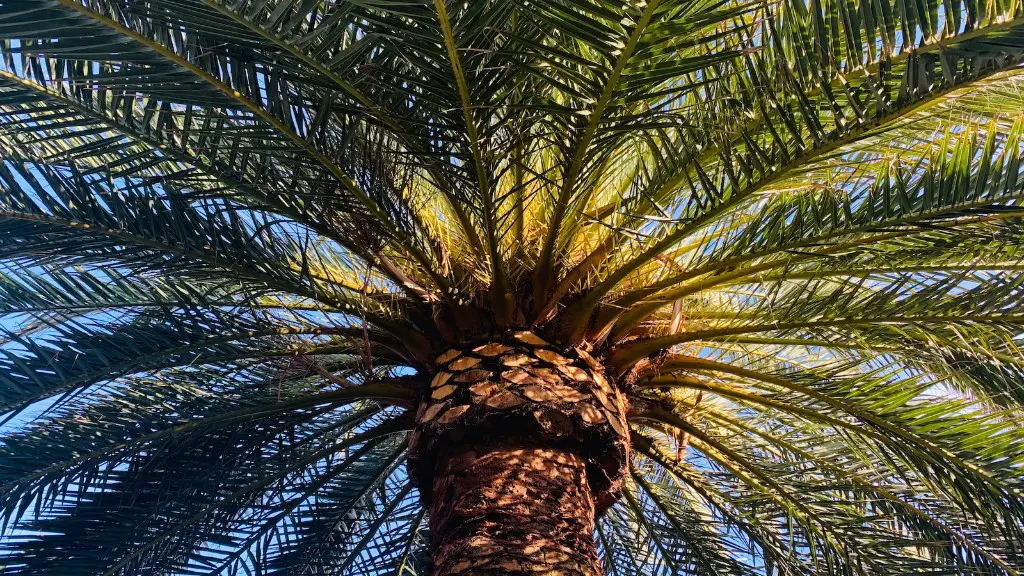For a successful apple tree transplant, timing is critical. The best time to transplant is typically during the dormant season, which typically lasts from late fall through early spring. There are several different factors that you should consider when deciding when to transplant an apple tree, such as the age and health of the tree, the size of the root ball, and the environmental conditions at the time of the transplant. This article will provide an overview of when it is best to transplant an apple tree and what considerations should be taken into account before transplanting.
Apple trees should be transplanted when the tree is dormant and there is no new growth. During dormancy, the tree’s critical needs, such as photosynthesis and nutrient uptake, are limited, so the process of replanting is less taxing on the tree. Planting during this time also allows the tree to adjust to its new environment before the growing season begins. Additionally, it’s important to be aware of the timing of the last frost in your area, which can affect the timing of the Apple tree transplant.
When selecting a tree for transplant, it’s important to take into account the age and health of the tree. Young trees that are no more than three years old can be transplanted into a new location much easier than older trees. Older trees will be more difficult to move and could face difficulties trying to adjust to the new environment. The root ball should also be considered. Young trees typically have smaller root balls that can be transplanted more easily. Larger root balls will be more difficult to transplant and you may need professional assistance.
When transplanting an Apple tree, it is important to take the time to prepare the soil for the new location. The area should be cleared of weeds and debris and should have high levels of organic matter. Additionally, it’s important to ensure that there are no pests or diseases present in the soil which could potentially infect the tree. The soil should be well-draining and should be tested for proper pH levels to ensure that the nutrients needed by the tree are in the soil.
Finally, it is important to take into account environmental conditions when transplanting an Apple tree. Transplanting during periods of extreme heat or cold can be difficult for the tree and can potentially cause the plant to become stressed and die, so it’s important to choose a time when the temperatures are mild. Transplanting the tree in rainy or windy weather can also be challenging, so be aware of the forecast and select a time period when the weather conditions are suitable.
Preparing for Transplantation
Preparing for the transplantation of an Apple tree is a critical step in ensuring successful growth post-transplant. It is important to do research to determine the best location for your tree to thrive, as well as the type of soil and nutrients required. Additionally, soil samples should be taken from the area and tested for pH levels and nutrient availability. Once the area is prepared for transplanting, the tree should be pruned and the root ball should be inspected to ensure that it does not contain any insects or diseases.
To transplant the Apple tree, you must take into account the size of the root ball and choose a transplanting method that is appropriate. If the root ball is small, it can be dug up and relocated relatively easily. Larger root balls will require special equipment to move and transport and in some cases, professional help may be necessary. Additionally, it is important to ensure that there is sufficient space for the tree to grow and develop without being crowded.
When transporting the Apple tree, it is important to ensure that the root ball and soil are not disturbed during the process. The tree should be secured on a tarp or other flat surface and the root ball should be wrapped with burlap to protect it. Additionally, it is important that the plant is not exposed to excessive temperature fluctuations, direct sunlight or wind during transport, as these conditions can cause the tree to become stressed and die.
Planting the Apple Tree
Once the Apple tree is transported to its new location, it is important to prepare the soil prior to planting. The area should be cleared of weeds and debris and then amended with soil and organic matter. The root ball should then be placed into the hole, making sure to place it at the proper depth and the soil should be backfilled and tamped down lightly. Finally, the tree should be mulched to protect the soil and roots from extreme cold, heat and wind.
Once the tree is planted, it is important to make sure that it receives sufficient water and nutrients. Watering is critical during the first few weeks of transplanting, as the tree will be using its limited energy to root into its new environment. Additionally, fertilizing can help to ensure that the tree has the proper nutrients for healthy growth. An appropriate fertilizer for an Apple tree should contain nitrogen, phosphorus and potassium, as these elements are essential for the growth and development of the tree.
Lastly, it is important to understand the signs of stress in newly transplanted Apple trees. Signs of stress can include premature leaf drop, discoloration of the foliage and wilting of the leaves. If any of these signs are observed, it is important to take steps to address the stress as quickly as possible. This can include providing additional water, pruning the tree, or applying a fertilizer. Also, if the tree is severely stressed, it may be necessary to consult with a professional arborist.
Protecting the Apple Tree
In order for an Apple tree to thrive after transplanting, it is important to provide the tree with appropriate care and protection from pests and diseases. Before transplanting, it is important to inspect the tree for signs of pests or diseases and to remove any affected leaves or branches. Additionally, it is important to monitor the tree regularly once it has been planted. If signs of pests or diseases are observed, the tree should be treated as soon as possible.
It is also important to take preventative measures to protect the Apple tree from unwanted pests and diseases. This can include spraying the tree with pesticide or fungicide as needed, as well as providing the tree with adequate space to grow. Additionally, it is important to prune the tree regularly to ensure that there is adequate airflow and light reaching all parts of the tree. It is also important to provide the tree with adequate water and nutrients to ensure that it is healthy and properly nourished.
Finally, it is important to be aware of the weather conditions in your area. Extreme temperatures, winds, and conditions can cause stress for the tree and can potentially lead to stunted growth or death. It is important to investigate ways of providing protection from these conditions, such as installing a protective windbreak or providing additional mulch around the base of the tree.
Harvesting the Apple Tree
When transplanting an Apple tree, it is important to know when the fruit will be ready to harvest. Typically, the tree should be ready to harvest fruit within 1-2 years of transplanting, depending on the type of Apple tree and its age. Additionally, it is important to pay attention to the fruit on the tree and to be aware of when it begins to ripen. Once the fruit starts to ripen, it should be ready to harvest within a few weeks.
When harvesting the fruit, it is important to ensure that the apples are fully ripe, as harvesting the fruit before it is ripe can prevent it from fully ripening and can lead to a shorter shelf life. Additionally, the fruit should be harvested carefully to ensure that it does not become damaged and that the tree is not damaged in the process. Once the Apple tree has been harvested, it is important to discard the fruit that has been damaged or is of inferior quality.
It is also important to provide sufficient water and nutrients to the Apple tree during the harvest season. The tree should be irrigated and fertilized regularly to ensure that the tree is healthy and able to produce quality fruit. It is also important to provide diluted foliar sprays to the tree prior to bloom and prior to fruit set, as these sprays can help to ensure that the tree has the necessary nutrients to produce quality fruit.
Storing Apples After Harvest
After harvesting the Apple tree, it is important to store the fruit properly. The apples should be stored in a cool, dark location. Ideally, the apples should be stored at temperatures between 30 and 35 degrees Fahrenheit, with high humidity levels. Additionally, the apples should be stored away from ripening fruit, such as pears, as the ethylene gas produced by the ripening fruit can cause the apples to ripen prematurely.
The apples should be inspected regularly for signs of bruising or other damage. If the apples show signs of bruising, they should be removed from the storage and discarded. Additionally, the apples should be rotated periodically to ensure that they do not become overripe or begin to rot on one side. Apples that are stored properly should remain fresh and flavorful for several weeks.
Finally, when storing Apple tree fruit it is important to use the proper containers. Apples should not be stored in plastic bags, as this can cause the fruit to become soggy. Instead, apples should be stored in perforated plastic containers, cardboard boxes or wooden trays to ensure good air circulation. Additionally, the apples should be placed in the containers with their stem ends facing upward to avoid rot.




